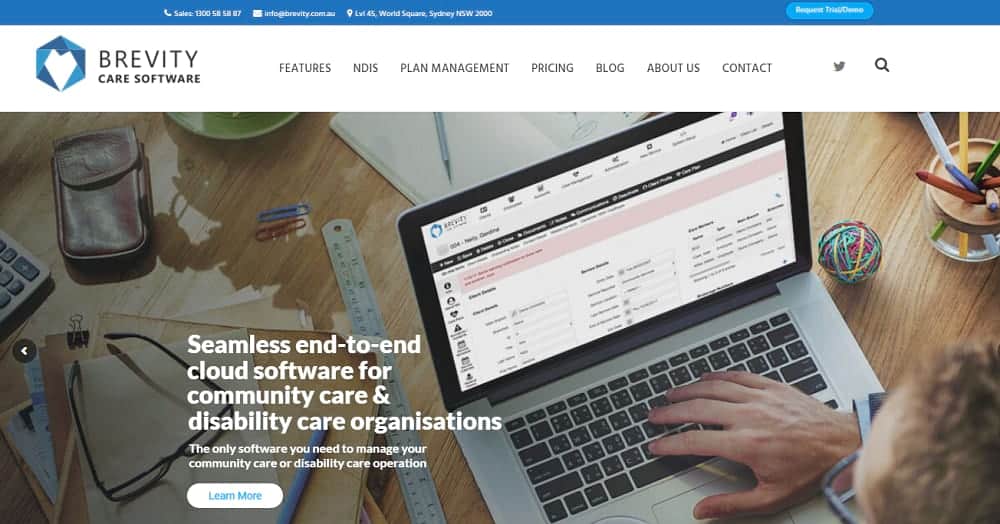
Best practice has become a bit of a business buzzword in the last decade. It describes the process of developing and following a exemplary way of doing things. Best Practice Guidelines in Aged Care is a model that can be adopted by organisations looking to optimise their systems. In Australia, the best practice guidelines in aged care, is a commitment to helping businesses, like yours, provide the best quality care for older Australians.
Responding to Australia’s ageing population by increasing the number of individuals and businesses recruited into aged care services is of primary importance. By responding in this way, you can help to fill the void that the government isn’t able to keep up with. And as a business owner, it is fundamental that you are up to date with the best aged care best practices to help you run your operations better.
At Brevity we recognise the best practice guidelines in aged care as someone who is committed to using the best possible resources, knowledge, experience and technology to ensure success. Brevity care is here to support you with software and services that allow you to focus on the best practice guidelines in aged care.
Furthermore, broken down below are the core concepts so your business can deliver the most up to date best practice in aged care.
Find out what this means for you so that you can run your operations better.
Best Practice Guidelines in Aged Care Explained
Aged Care Quality Standards
The Aged Care Quality Standards apply to all Australian Government-funded aged care services. They are as follows:
- Consumer dignity and choice
- Ongoing assessment and planning
- Personal care and clinical care
- Services and supports for daily living
- Organisation’s service environment
- Feedback and complaints
- Human resources
- Organisational governance
The Australian Government announced a review of the Aged Care Quality Standards on 1 March 2021. The review will be completed by December 2022. The Aged Care Engagement Hub provides information and updates on ways you can register and keep informed on the review of the Quality Standards.
Charter of Aged Care Rights
The Charter of Aged Care Rights protects the rights of people receiving aged care. It applies to all aged care services that are funded by the Australian Government. The Charter is made in law. See changes in the User Rights Principles.
You must:
- sign and provide a copy of the Charter to each person receiving aged care
- help each person to understand the Charter
- give them time to understand and sign the copy
- comply with record keeping requirements relating to the Charter
Asking the person to sign the Charter confirms they have received and understand it. They can choose not to sign the Charter. Their services can still start or continue if they choose not to sign.
Everyone involved in the delivery of aged care must respect the rights of people receiving aged care.
The Aged Care Quality and Safety Commission has resources to help you with your responsibilities to care recipients.
The Older Persons Advocacy Network (OPAN) has more information and resources on the Charter of Aged Care Rights.
Mandatory Quality Indicator Program
The National Aged Care Mandatory Quality Indicator Program is for government-subsidised residential aged care services.
Under this program, you must report to the Department of Health on 3 quality indicators. They are:
- pressure injuries
- the use of physical restraint
- unplanned weight loss
This program can help you to carry out continuous quality improvement.
Serious Incident Response Scheme (SIRS)
SIRS is a proposed approach to help aged care service providers:
- reduce the risk of abuse and neglect in aged care
- respond to and manage serious incidents that occur in residential aged care
- support care recipients affected by a serious incident
Find out more about our work on the Serious Incident Response Scheme (SIRS).
Summary
This overview is intended to give business owners a guide on aged care best practice guidelines that will help them to run their operations better. It is important to understand that Australia’s aging population presents a unique set of challenges moving forward. That is why the Australian business community must begin looking at how it can rise to meet this challenge.
Business owners like you can help elderly Australians live more independently and access a higher standard of living by developing the services your business offers. And if you would like to know more about how Brevity Care software can help you meet the challenges in the aged care service provision space and deliver better care to your clients, contact us today for a free trial of our tailored software solution.

Originally published March 14 2022



